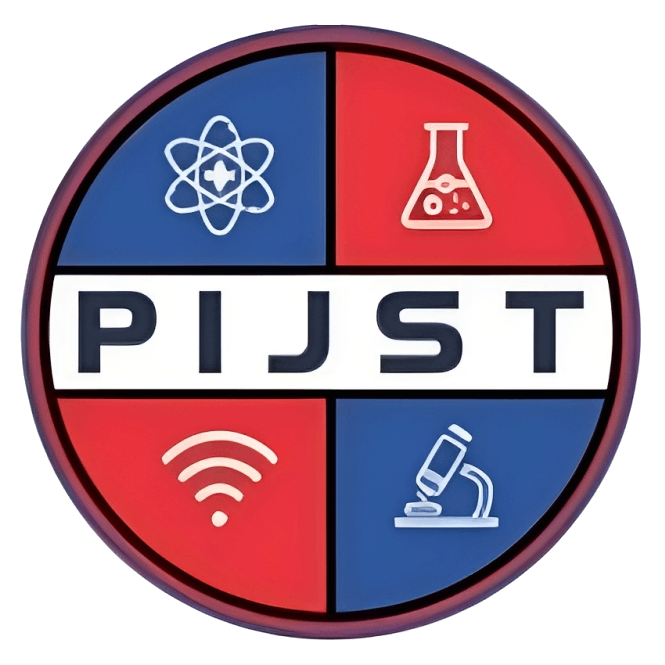Dr. M.Z. Demir, Phy. Deptt., Ankara University, Ankara, Turkey
Published Date: 05-02-2025 Issue: Vol. 2 No. 2 (2025): February 2025 Published Paper PDF: Download
Abstract- Fusion energy represents a transformative pathway for sustainable electricity generation, offering high energy density, abundant fuel resources, and minimal environmental impact. Unlike nuclear fission, fusion joins light nuclei—primarily deuterium and tritium—under extreme temperatures and pressures to release vast amounts of energy. Tokamak reactors, designed as toroidal chambers with magnetic coils, have emerged as the leading approach for plasma confinement. Their ability to maintain plasma stability through combined toroidal and poloidal magnetic fields makes them central to ongoing fusion research. Historically, advances in plasma physics, magnetic confinement, and heating techniques such as neutral beam injection, ohmic heating, and radio-frequency methods have propelled the field. Presently, large-scale projects like ITER in France, SPARC in the USA, and K-STAR in South Korea demonstrate global collaboration in addressing challenges of plasma instabilities, energy loss, and economic viability. Key issues include achieving ignition, breeding tritium sustainably, mitigating energy losses, and ensuring radiation safety. Despite delays, technological innovations in superconducting magnets, real-time control, and disruption mitigation have renewed optimism. Fusion’s potential environmental benefits—low carbon emissions and manageable radioactive waste—position it as a superior alternative to fossil fuels and fission. Public perception, regulatory frameworks, and international cooperation remain crucial for its realization. Ultimately, fusion energy promises a nearly inexhaustible, safe, and clean energy future, though its commercial deployment requires overcoming significant technical and socio-economic hurdles.
Keywords- Fusion Energy, Tokamak Reactors, Plasma Physics, Magnetic Confinement, ITER, SPARC, K-STAR, Deuterium-Tritium Fuel, Nuclear Safety, Sustainable Energy.
Published Date: 05-02-2025 Issue: Vol. 2 No. 2 (2025): February 2025 Published Paper PDF: Download
Abstract- Fusion energy represents a transformative pathway for sustainable electricity generation, offering high energy density, abundant fuel resources, and minimal environmental impact. Unlike nuclear fission, fusion joins light nuclei—primarily deuterium and tritium—under extreme temperatures and pressures to release vast amounts of energy. Tokamak reactors, designed as toroidal chambers with magnetic coils, have emerged as the leading approach for plasma confinement. Their ability to maintain plasma stability through combined toroidal and poloidal magnetic fields makes them central to ongoing fusion research. Historically, advances in plasma physics, magnetic confinement, and heating techniques such as neutral beam injection, ohmic heating, and radio-frequency methods have propelled the field. Presently, large-scale projects like ITER in France, SPARC in the USA, and K-STAR in South Korea demonstrate global collaboration in addressing challenges of plasma instabilities, energy loss, and economic viability. Key issues include achieving ignition, breeding tritium sustainably, mitigating energy losses, and ensuring radiation safety. Despite delays, technological innovations in superconducting magnets, real-time control, and disruption mitigation have renewed optimism. Fusion’s potential environmental benefits—low carbon emissions and manageable radioactive waste—position it as a superior alternative to fossil fuels and fission. Public perception, regulatory frameworks, and international cooperation remain crucial for its realization. Ultimately, fusion energy promises a nearly inexhaustible, safe, and clean energy future, though its commercial deployment requires overcoming significant technical and socio-economic hurdles.
Keywords- Fusion Energy, Tokamak Reactors, Plasma Physics, Magnetic Confinement, ITER, SPARC, K-STAR, Deuterium-Tritium Fuel, Nuclear Safety, Sustainable Energy.

 : 10.62796/pijst
: 10.62796/pijst